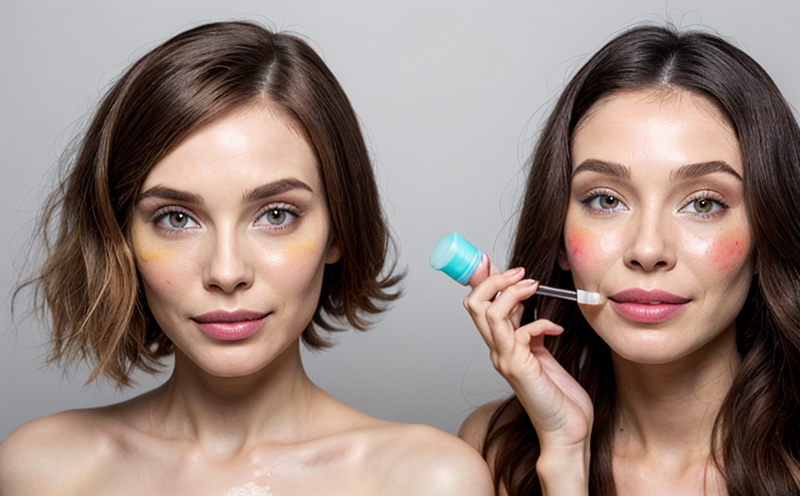Clinical Soothing Effect Testing in Botanical Cosmetics
In the fast-paced world of cosmetics and personal care products, consumer demand for natural and organic ingredients continues to grow. This trend has led to an increase in the development and marketing of botanical cosmetic products that promise a wide range of benefits, including soothing effects on sensitive skin. Ensuring these claims are accurate is crucial for maintaining trust with consumers. Clinical soothing effect testing in botanical cosmetics provides a rigorous scientific basis for validating such claims.
The process involves simulating real-world conditions under which the product will be used and assessing its ability to provide relief from irritation, inflammation, or discomfort. This type of testing requires careful selection of subjects who represent the target demographic, ensuring that the results are relevant and applicable to a broader population. It also necessitates the use of standardized methods and equipment to ensure consistency across different studies.
One key aspect of this service is understanding how botanical extracts interact with various skin types and conditions. For instance, certain active ingredients may have varying effects depending on factors like pH levels or lipid content in the stratum corneum. Therefore, it’s essential to tailor tests specifically for each product formulation.
| Parameter | Description |
|---|---|
| Skin Irritation Score (SIS) | A quantitative measure of skin irritation following exposure to the test product. |
| Inflammation Level | Assessment using clinical scales like SCORing Atopic Dermatitis or TEWL measurement. |
| Subjective Sensations | Patient-reported outcomes regarding comfort and relief experienced after application. |
The testing procedure typically begins with preliminary assessments to determine baseline skin characteristics. Then, participants are randomly assigned to receive either the test product or a placebo over specified intervals. Throughout this period, they undergo repeated evaluations using both objective measures (such as biopsies) and subjective reports. By comparing these data points against controls, researchers can conclusively evaluate whether the botanical cosmetic delivers on its promised soothing properties.
- Tests are conducted in controlled environments to minimize external variables affecting results.
- Data is analyzed statistically using methods such as ANOVA or regression analysis.
Applied Standards
Clinical soothing effect testing in botanical cosmetics adheres to several internationally recognized standards aimed at ensuring accuracy and reliability. These include ISO/IEC 17025 for laboratory accreditation, which guarantees that all procedures meet rigorous quality controls. Additionally, specific protocols from organizations like the European Pharmacopoeia (EP) or United States Pharmacopeial Convention (USP) provide guidance on selecting appropriate subjects, defining endpoints, and interpreting outcomes.
For instance, EP 273 defines criteria for evaluating topical dermatological preparations based on their capacity to alleviate symptoms associated with mild-to-moderate inflammatory skin conditions. Similarly, USP General Chapter 9008 offers similar recommendations but focuses more narrowly on treatments for cutaneous conditions.
Compliance with these standards ensures that the testing process is transparent, reproducible, and aligned with best practices globally. It also facilitates easier sharing of results between different laboratories worldwide, enhancing overall confidence in product efficacy claims made by manufacturers.
International Acceptance and Recognition
- Clinical soothing effect testing for botanical cosmetics is widely accepted across Europe due to stringent regulatory frameworks like the Cosmetics Regulation (EC) No. 1223/2009.
- In North America, it aligns with FDA guidelines on dermatological product testing.
The growing popularity of natural and organic products has driven increased demand for this type of testing. As more consumers seek out eco-friendly alternatives, there’s a corresponding need to verify that these offerings indeed live up to their environmental claims while simultaneously delivering effective treatments for common skin issues.
Recognizing the importance of this service, numerous industry bodies have endorsed it as part of their certification processes. For example:
- The Natural Product Association (NPA) requires independent third-party verification through clinical trials before awarding its seal of approval to companies.
- Similarly, the European Union's Eco-label Scheme encourages manufacturers to undergo rigorous testing to demonstrate environmental friendliness alongside proven efficacy.
Use Cases and Application Examples
Clinical soothing effect testing in botanical cosmetics finds application across various sectors within the personal care industry. Some notable use cases include:
| Application Area | Description |
|---|---|
| Anti-inflammatory Serums | Evaluating the effectiveness of active botanicals in reducing redness and swelling. |
| Sensitive Skin Care Products | Demonstrating that formulations are gentle enough for individuals with compromised skin barriers. |
| Post-Procedural Treatments | Assuring that healing creams or lotions do not exacerbate post-treatment discomfort. |
In each of these scenarios, the goal is to provide objective evidence supporting claims about a product’s soothing nature. This information becomes invaluable during marketing campaigns, helping brands build credibility and foster customer loyalty.





